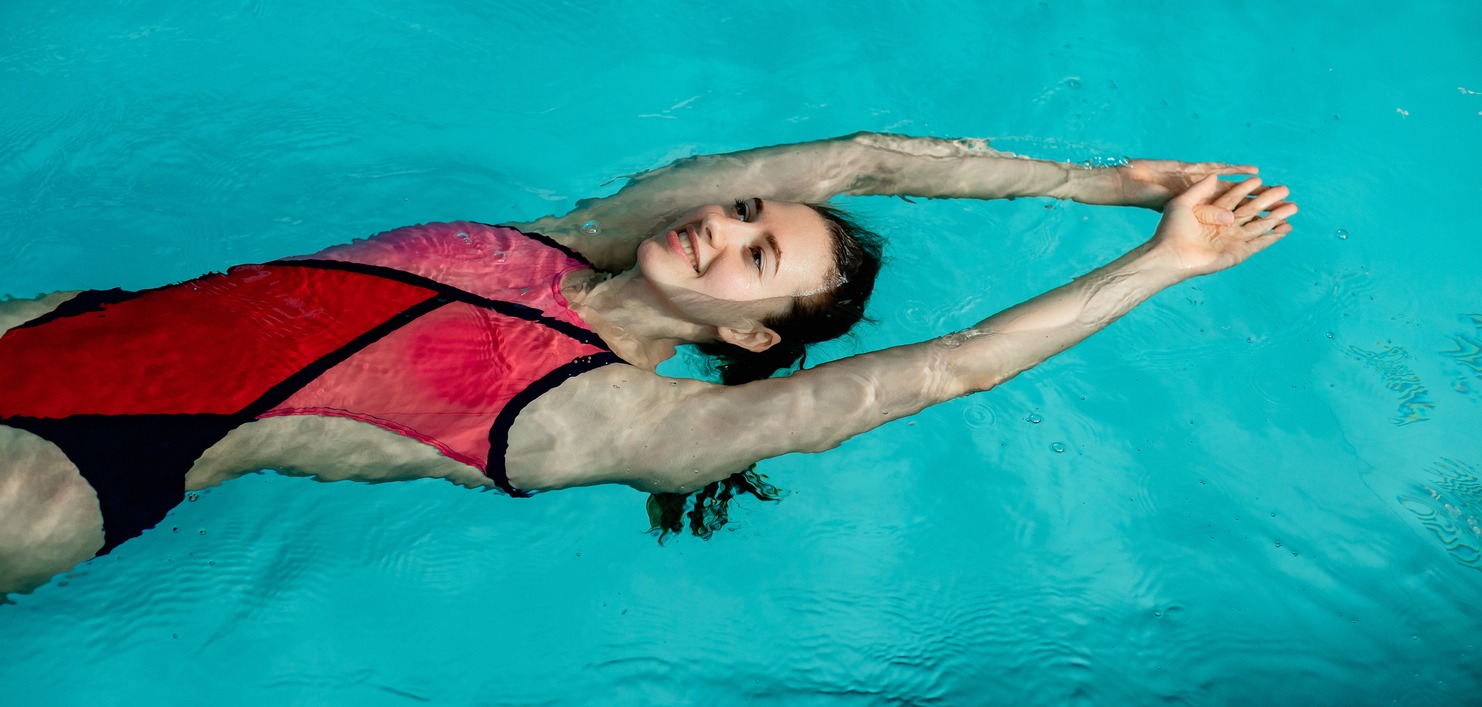How Swimwear Trends and Style in Swimming Sports Have Changed Over the Years

Swimwear in swimming sports has drastically evolved since the early 1900s. You'd barely recognize the modest, woolen bodysuits of yesteryear compared to today's high-tech designs. Over the decades, materials advanced from silk to nylon, then to performance-enhancing fabrics like Lycra and polyurethane. Styles shifted from conservative coverage to streamlined, form-fitting suits that prioritize speed and reduced drag. Competitive swimwear has seen the most dramatic changes, with innovations like Speedo's Fastskin and LZR Racer pushing performance boundaries. However, these advancements haven't been without controversy, leading to ongoing debates and regulations in competitive swimming. The story of swimwear's alteration is as deep and complex as the sport itself.
Early 20th Century Swimwear Evolution
The early 20th century's swimwear evolution reflected society's shifting attitudes towards modesty and athleticism in aquatic sports. If you'd stepped onto a beach in the early 1900s, you'd have seen women's bathing suits that were far from what we consider practical today. These swimsuits consisted of woolen bodysuits, designed to be conservative and modest. You'd have noticed women layering shorts and gowns over these suits, prioritizing decency over comfort or performance. Detailed descriptions of standard female bathing costumes in 1678 showed that ladies wore garments of large, stiff yellow canvas with great sleeves, designed to fill with water and not cling to the wearer.
As the century progressed, you'd have witnessed small but significant changes. In 1912, silk swimsuits made their debut, offering a lighter alternative to wool. However, they came with their own set of problems, becoming transparent when wet and raising concerns about modesty. By 1924, women's swimsuits had evolved to feature a skirt-like design that partially covered the hips, still emphasizing modesty over athleticism. This trend continued into the 1930s, with women's suits remaining conservative while men's swimwear saw more dramatic changes. The controversy surrounding Clare Dennis at the 1932 Olympics highlights the ongoing tension between athletic performance and societal expectations of modesty in women's swimwear during this period.
Technological Advancements in Swimsuit Materials

Five key technological advancements revolutionized swimsuit materials in the latter half of the 20th century. In the 1950s, you'd have seen the introduction of nylon, which created smoother, tighter-fitting swimsuits that reduced drag. As the decade progressed, nylon's water-resistant properties were uncovered, laying the foundation for further improvements.
The 1980s brought a game-changing addition: Lycra. When combined with nylon, it provided a more compressive and flexible fit, enhancing swimmers' performance. Fast forward to 2000, and you'd have witnessed the debut of the Speedo Fastskin suit. This innovative design featured shark skin-inspired grooves and Teflon coatings, aiming to accelerate speed and efficiency in the water.
In 2008, the Speedo LZR Racer made waves with its polyurethane-based construction. This suit increased buoyancy and streamlining, giving swimmers an edge in competition. These advancements transformed competitive swimming, pushing the boundaries of what was possible in the pool and sparking debates about the role of technology in sports performance.
Performance-Driven Design Innovations
Building on these material advancements, swimwear designers turned their focus to performance-driven innovations. You'll notice that suits like Speedo's Fastskin, introduced in 2000, incorporated sharkskin-inspired technology to reduce water resistance by 15%. This breakthrough was widely adopted, with 83% of Olympic medalists wearing these suits that year.
The evolution continued with the debut of Speedo's LZR Racer in 2008. This suit combined polyurethane and elastane-nylon fabrics to enhance buoyancy and streamlining, leading to numerous world records being shattered. The incorporation of Lycra and nylon in swimwear allowed for tighter, more flexible fits, improving swimmers' streamlining and reducing drag in the water.
Classic mask with one big lens covering eyes and nose and other mask types have also played a role in enhancing performance for snorkelers. You'll find that designers prioritized features like water repellency and durability to meet competitive swimmers' needs. The introduction of compression "paper" suits in 1976 aimed to maximally accelerate speed and reduce drag, sparking debates about technology's role in swimming. These performance-driven innovations have profoundly impacted the sport, pushing the boundaries of what's possible in the water and challenging traditional notions of fair competition.
Competitive Swimwear Regulations and Controversies
Competitive swimwear regulations have evolved greatly over the past century, driven by a mix of social norms and technological advancements. Early 20th-century protests against revealing women's suits led to stricter swimsuit coverage rules, reflecting the era's modesty standards. As swimming became more competitive, the focus shifted to performance-driven designs.
The swimsuit evolution has been marked by several key developments:
- Division of swimsuits into training and competition models
- Introduction of new styles and materials for drag reduction
- Adidas' long-sleeved suit challenging Speedo's dominance in 2000
- Polyurethane-based suits sparking controversies in 2008
These advancements in swimsuit technology have continuously pushed the boundaries of competitive swimwear, leading to ongoing debates and regulatory changes. Swimwear manufacturers have consistently sought to give athletes an edge through innovative designs and materials. However, this pursuit of performance has often clashed with fairness concerns, resulting in swimsuit controversies and subsequent rule adjustments.
You'll find that the interplay between technological progress and regulatory oversight continues to shape the terrain of competitive swimming. As new materials and designs emerge, swimsuit regulations adapt to maintain a balance between innovation and fair competition.
Fashion Trends in Recreational Swimming

While competitive swimwear focuses on performance, recreational swimming fashion trends prioritize style, comfort, and self-expression. You'll find that traditional square cut and board short styles remain popular for leisure swimming, offering the coverage and comfort many swimmers prefer. However, the recreational market has welcomed vibrant prints and retro designs, reflecting broader fashion trends and allowing you to showcase your personality poolside.
One of the most significant developments in leisure swimwear is the improved accessibility and inclusivity. You'll now find a wider range of sizes and cuts available, ensuring that everyone can find a swimsuit that fits well and feels comfortable. This focus on comfort and coverage has become a key factor in the design and selection of recreational swimwear, rather than pure performance.
Interestingly, you might notice that recreational swimwear trends often trickle down from competitive swimming**. As a consumer, you may be drawn to styles that emulate the latest competitive designs, albeit with modifications for everyday use. This influence helps bridge the gap between performance-oriented and fashion-forward swimwear**, giving you the best of both worlds.
Gender Dynamics in Swimsuit Styles
Throughout the history of swimming sports, gender flux have played a significant role in shaping swimsuit styles. You'll notice that women's swimsuits have undergone a dramatic plunge, evolving from modest, full-coverage garments to more revealing designs. This shift reflects changing social attitudes towards gender norms and body image. Men's swimwear has also seen its fair share of changes, alternating between form-fitting briefs and looser styles, often influenced by prevailing notions of masculinity and athleticism.
The swimwear industry has responded to these gender dynamics by:
- Offering a wider range of styles to cater to diverse body types
- Adapting designs for competitive swimming to enhance performance
- Creating more inclusive options for athletes across the gender spectrum
- Balancing fashion trends with functionality for both recreational and versatile swimmers
You'll find that swimsuit trends in swimming sports mirror the evolving gender dynamics of their respective eras. As societal attitudes shift, so do the styles and cuts of both women's bathing suits and men's swimwear. This ongoing transformation reflects the complex interplay between gender expression, body image, and athletic performance in the world of swimming.
Cultural Influences on Swimwear Design
Cultural influences have left an enduring mark on swimwear design in swimming sports. As you've witnessed over the decades, swimsuit styles have evolved alongside broader cultural trends, reflecting shifts in gender norms, body image perceptions, and athletic ideals. The globalization of sports has played a significant role in this transformation, introducing diverse aesthetic influences from around the world into swimwear design.
You'll notice that swimsuit manufacturers have been quick to adapt to changing consumer preferences. They've introduced bold prints, retro designs, and inclusive sizing options to cater to shifting cultural attitudes. Technological advancements have also allowed swimsuits to serve both practical and aesthetic functions, balancing performance features with fashionable appeal.
In competitive swimming, swimwear has become an integral part of an athlete's visual identity. You'll often see patriotic branding and national team uniforms that reflect cultural heritage and self-expression. This blend of functionality and cultural representation showcases how swimwear design has become a canvas for expressing diverse identities and values in the pool, bridging the gap between athletic performance and cultural identification.




